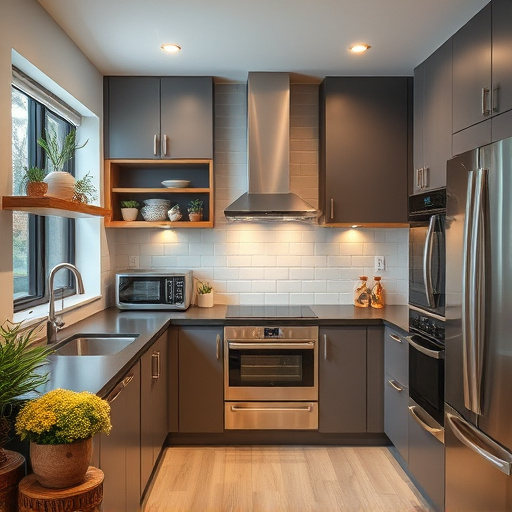This text identifies common issues in GE ovens and ranges (faulty heating, temp control, timers, grease buildup, gas valve problems), stresses the importance of regular maintenance for prevention, and advises homeowners to turn off power/gas, wear protective gear, and keep repair records. It also highlights when to seek professional help for complex troubleshooting and repairs, such as persistent errors, unusual burning, damage, lack of heating, or strong odors, to ensure safe cooking operations.
Maintaining your GE oven and range is crucial for ensuring safe cooking operations. This guide breaks down common issues, safety steps, and signs it’s time to call a professional technician. Understanding typical problems like heating element malfunctions, temperature control issues, and gas leak risks is the first step. Then, learn essential safety measures for DIY repairs and maintenance to prevent accidents. By knowing when to seek expert assistance, you can keep your kitchen appliances running smoothly and securely.
- Understanding GE Oven/Range Common Issues
- Safety Steps for Repair & Maintenance
- When to Call a Professional Technician
Understanding GE Oven/Range Common Issues

Many GE oven and range issues can be traced back to common problems, such as faulty heating elements, incorrect temperature control, or malfunctioning timers. Another frequent issue is a buildup of grease and grime that can impede proper heat distribution and lead to uneven cooking. Moreover, issues with gas ranges may include improper valve operation, leading to inadequate gas flow or even leaks.
Understanding these typical challenges allows for more efficient troubleshooting and repairs. Regular maintenance, including cleaning and inspection, can help prevent many of these problems from escalating. If you suspect an issue, it’s crucial to consult a professional repair service with experience in GE appliances to ensure safe and accurate diagnosis and repair.
Safety Steps for Repair & Maintenance

When it comes to repairing or maintaining a GE oven and range, safety should always be the top priority. Before beginning any work, ensure that both power and gas supplies are turned off at their respective sources. This is crucial to prevent accidents and injuries during the repair process. Additionally, wear appropriate protective gear, such as insulated gloves and safety goggles, to shield yourself from potential hazards like hot parts or sharp edges.
Regular maintenance checks can also help identify potential risks early on. Inspect the oven for any signs of damage, corrosion, or loose connections. Keep records of all repairs and replacements made to track any recurring issues. By following these safety steps, you create a safer environment for yourself and your family while ensuring your cooking operations run smoothly and efficiently with your GE oven and range.
When to Call a Professional Technician

If you’re faced with a GE oven or range issue, it’s essential to recognize when professional help is required for safe cooking operations. While minor troubleshooting can sometimes be tackled by homeowners, complex problems or unusual noises should prompt a call to a certified technician. Electric and gas appliances pose potential safety hazards if not handled correctly, so it’s crucial to leave serious repairs to the experts.
Red flags include persistent errors on digital displays, unusual burning or cooking patterns, unexpected temperature fluctuations, or any signs of physical damage. Additionally, if your oven or range has stopped heating altogether or if you detect strong, unpleasant odors, these are all indications that a professional should be consulted to diagnose and repair the issue effectively and securely.
In ensuring safe cooking operations, understanding common issues and taking proactive safety steps are paramount when repairing or maintaining a GE oven or range. However, if problems persist or repairs seem complex, it’s crucial to consult a professional technician for expert assistance. By doing so, you safeguard your home, appliances, and culinary experiences from potential hazards.
